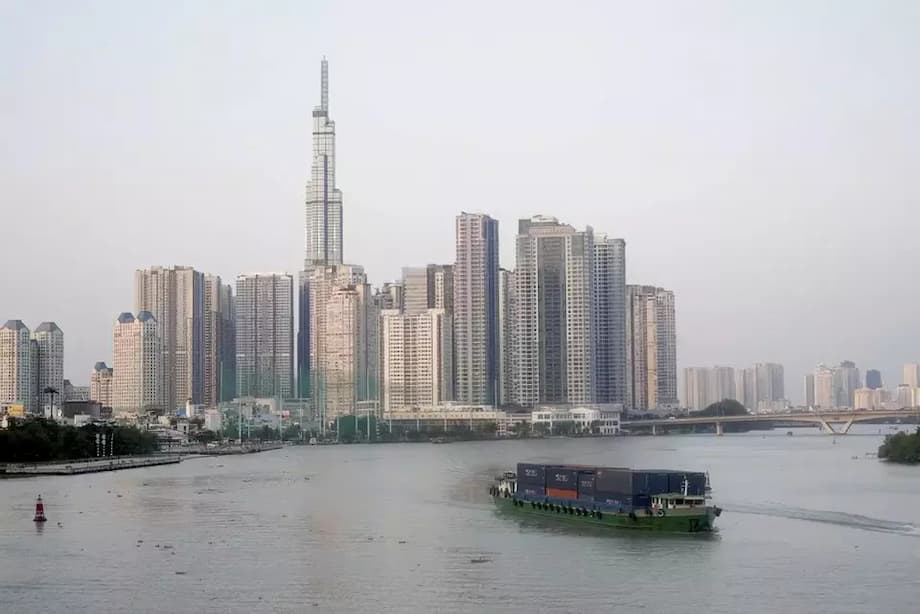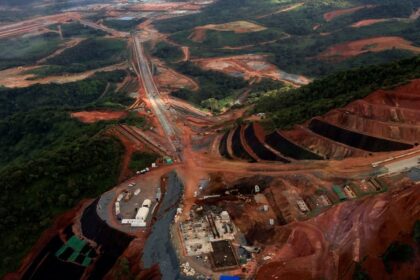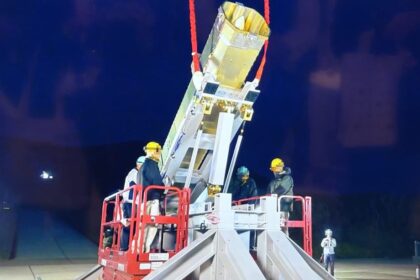Vietnam’s Bold Bid to Join Asia’s Tiger Economies
In the heart of Hanoi, beneath the iconic red banners and the gold bust of Ho Chi Minh, Communist Party chief To Lam recently declared a new era for Vietnam. His speech marked the launch of the country’s most ambitious economic overhaul in decades—a sweeping plan to transform Vietnam into Asia’s next “tiger economy” by 2045. The goal: to join the ranks of South Korea, Taiwan, Singapore, and Hong Kong as a high-income, globally competitive powerhouse.
- Vietnam’s Bold Bid to Join Asia’s Tiger Economies
- From Doi Moi to the Tiger Ambition: Vietnam’s Economic Transformation
- What Does It Mean to Be an Asian Tiger?
- Vietnam’s New Economic Blueprint: High-Tech, Green, and Private-Led
- The High-Tech Push: “Make in Vietnam” and Digital Ambitions
- Private Sector Ascendancy: From State-Led to Entrepreneurial Growth
- Challenges on the Road to Tiger Status
- The Role of Tourism and Services in Vietnam’s Growth Story
- Geopolitics and Vietnam’s Balancing Act
- Expert Perspectives: Optimism and Caution
- In Summary
Vietnam’s journey from war-torn poverty to a rising economic star is remarkable. In 1990, the average Vietnamese could afford just $1,200 worth of goods and services per year. Today, that figure has soared to over $16,000. Millions have been lifted from poverty, and the country has become a global manufacturing hub. Yet, as Vietnam’s low-cost, export-led growth model begins to slow, the nation faces a critical crossroads. Can it leap from middle-income status to become a true Asian tiger, or will it fall into the so-called “middle-income trap” that has stalled other emerging economies?
From Doi Moi to the Tiger Ambition: Vietnam’s Economic Transformation
Vietnam’s economic miracle began in 1986 with the launch of Doi Moi (Renovation), a set of sweeping reforms that shifted the country from a centrally planned economy to a market-oriented one. The reforms opened the door to private enterprise, foreign investment, and global trade. Over the next three decades, Vietnam’s economy grew at an average rate of nearly 7% per year, making it one of the world’s fastest-growing economies. The poverty rate plummeted from nearly 60% in the early 1990s to under 14% by 2014, according to the IMF.
Key drivers of this transformation included:
- Export-led growth: Vietnam became a manufacturing powerhouse, especially in textiles, electronics, and footwear.
- Foreign direct investment (FDI): Major global brands like Samsung, Apple, and Nike established production bases, attracted by Vietnam’s skilled, low-cost workforce and stable policies.
- Integration into global supply chains: Vietnam joined ASEAN in 1995 and the World Trade Organization in 2007, signing numerous free trade agreements that opened new markets.
- Strategic location: Its proximity to China and position in East Asia made Vietnam a key link in global supply chains.
But as labor costs rise and global competition intensifies, Vietnam’s leaders recognize that the old model is running out of steam. The next phase requires moving up the value chain, investing in technology, and building a more resilient, innovative economy.
What Does It Mean to Be an Asian Tiger?
The term “Asian tiger” refers to the four economies—South Korea, Taiwan, Singapore, and Hong Kong—that achieved rapid industrialization and exceptionally high growth rates from the 1960s to the 1990s. These economies transformed from low-income, agrarian societies into global leaders in manufacturing, technology, and finance. Their success was built on export-oriented industrialization, investment in education and infrastructure, and strong, pragmatic governance.
Vietnam’s ambition is to replicate this trajectory, but with its own twist. Unlike the original tigers, Vietnam’s economy is more diverse and cannot rely on a single sector. The government is making “multiple big bets” on high-tech industries, digital transformation, and green energy, while also investing heavily in infrastructure and institutional reform.
Vietnam’s New Economic Blueprint: High-Tech, Green, and Private-Led
Vietnam’s transformation blueprint rests on three pillars: infrastructure, energy, and institutional reform. Each carries both promise and risk.
1. Infrastructure: Building for the Future
The government is investing in a $67 billion North-South high-speed railway, which would cut travel time between Hanoi and Ho Chi Minh City to under seven hours. This project aims to integrate markets, reduce logistics costs, and spur regional development. There are also plans for new civilian nuclear plants and major upgrades to ports and digital infrastructure.
2. Energy: Powering Growth Sustainably
Vietnam’s electricity demand is growing by 8–10% annually. To meet this need without deepening carbon dependence, the country is investing in renewable energy and nuclear power. The goal is to attract high-tech manufacturing and advanced services that require reliable, low-carbon power.
3. Institutional Reform: Streamlining for Agility
Vietnam is consolidating ministries, reducing bureaucratic layers, and merging provinces to create stronger regional economies. Under Resolution 68, private enterprises are now designated as the most important force in the economy—a major shift from past reliance on state-owned firms. The government is cultivating “national champions”: domestic companies encouraged to innovate, win major contracts, and expand internationally, with a target of at least 20 achieving global scale by 2030.
The High-Tech Push: “Make in Vietnam” and Digital Ambitions
Vietnam is betting big on high-tech sectors to drive its next phase of growth. The “Make in Vietnam” strategy is transforming the country’s information and communication technology (ICT) sector from outsourcing and assembly to creating high-value, innovative products. In 2024, the digital technology sector generated $152 billion in revenue, employing over 1.2 million workers.
Major achievements include:
- Semiconductors and electronics: Companies like Samsung have made Vietnam their largest production base. The country is also attracting investments from Intel, Amkor, and Marvell in the semiconductor industry.
- Software and digital services: Firms like FPT and Viettel are expanding globally, with FPT aiming for $5 billion in software export revenue by 2030.
- Startups and innovation: Vietnam’s tech startup ecosystem boasts four unicorns and attracted $2.5 billion in venture funding by 2025.
The government is supporting this push with tax breaks, research funding, and special economic zones in cities like Ho Chi Minh City and Danang. The aim is to make Vietnam a global financial and innovation center, rivaling regional hubs.
Private Sector Ascendancy: From State-Led to Entrepreneurial Growth
For decades, Vietnam’s growth was powered by state-owned enterprises and foreign multinationals. Now, the government is shifting its focus to the domestic private sector. Policies are being introduced to make it easier for private firms to access loans, win government contracts, and expand overseas. The hope is to nurture a new generation of Vietnamese companies that can compete on the global stage.
However, challenges remain. Many local firms struggle to access capital and remain at the low end of supply chains. Resistance from entrenched interests in state-owned enterprises and parts of the Communist Party could slow reforms. Still, the government’s commitment to private-led growth marks a significant change in economic strategy.
Challenges on the Road to Tiger Status
Despite its impressive progress, Vietnam faces significant hurdles on its path to becoming an Asian tiger.
1. The Middle-Income Trap
Many developing countries experience rapid growth as they industrialize, only to stagnate before reaching high-income status—a phenomenon known as the “middle-income trap.” To avoid this, Vietnam must shift from relying on cheap labor and capital accumulation to boosting productivity through technology and innovation. Academic studies highlight the need for balanced sectoral policies, targeting both agriculture and non-agricultural sectors to raise productivity.
2. Demographic Shifts
Vietnam’s “golden population window”—when the working-age population vastly outnumbers dependents—will begin closing by 2039. The labor force is expected to peak soon, potentially shrinking productivity and straining social services. The government is expanding healthcare, raising the retirement age, and encouraging more women to join the workforce to offset labor gaps and promote healthy aging.
3. Climate Change and Environmental Risks
Vietnam is one of the countries most vulnerable to climate change. Flooding, rising sea levels, and extreme weather threaten the Mekong Delta—Vietnam’s rice bowl and export hub. If the country fails to adapt, it could lose up to 14.5% of its GDP annually by 2050, and up to a million people could fall into extreme poverty by 2030. The government is investing in resilience and green energy, but the risks are significant.
4. Global Trade Tensions and Protectionism
Vietnam’s export boom has benefited from U.S.-China trade tensions, making the U.S. its largest export market. However, this success has drawn scrutiny. In 2024, Vietnam ran a $123.5 billion trade surplus with the U.S., leading to new tariffs. The U.S. has imposed tariffs of up to 20% on most Vietnamese goods, with even higher rates on transshipped products. While Vietnam is negotiating to manage these pressures, the era of easy export-led growth may be ending.
Former U.S. Ambassador Daniel Kritenbrink commented, “As long as Vietnam’s tariffs are comparable to those of its neighbors, the country can manage.”
To sustain growth, Vietnam must diversify its economy, move up the value chain, and strengthen domestic demand.
The Role of Tourism and Services in Vietnam’s Growth Story
Vietnam’s tourism sector has become a vital pillar of the economy, contributing nearly 10% of GDP and supporting millions of jobs. The country’s rich cultural heritage, stunning landscapes, and reputation for safety have made it a top destination for international travelers. In the first quarter of 2024 alone, Vietnam welcomed over 4.6 million foreign tourists—a 72% increase from the previous year.
Efficient infrastructure, streamlined visa policies, and a focus on hospitality have set Vietnam apart from many regional competitors. The government’s investment in tourism is part of a broader strategy to diversify the economy and create jobs beyond manufacturing.
Geopolitics and Vietnam’s Balancing Act
Vietnam’s strategic location between China and the U.S. gives it unique geopolitical leverage. The country has maintained a balanced foreign policy, designating both powers as comprehensive strategic partners. This approach has helped Vietnam attract investment from multiple sources while avoiding overreliance on any single partner.
However, the shifting global landscape—marked by rising protectionism, supply chain realignments, and technological competition—poses new challenges. Vietnam’s ability to navigate these dynamics will be crucial to its continued ascent.
Expert Perspectives: Optimism and Caution
Investors and analysts are generally optimistic about Vietnam’s prospects. VinaCapital, a leading investment manager, highlights the country’s young, tech-savvy workforce, growing middle class, and stable macroeconomic policies. The stock market is seen as undervalued, with strong corporate earnings growth and the potential for an upgrade to emerging market status by FTSE in 2025—an event that could attract significant global capital inflows.
At a recent wealth management forum, a VinaCapital representative argued, “Vietnam’s geopolitical position, stable policies, and economic reforms make it Asia’s next tiger economy, and investors should take note.”
Yet, there are also notes of caution. The New York Times and other observers warn that the age of miraculous export-led growth may be over, as automation, protectionism, and global economic shifts reduce the effectiveness of the old model. For Vietnam to succeed, it must focus on developing its domestic market, upgrading services, and creating better jobs for its growing middle class.
In Summary
- Vietnam is undertaking its most ambitious economic overhaul in decades, aiming to become Asia’s next tiger economy by 2045.
- The country’s transformation began with the Doi Moi reforms in 1986, which opened the door to private enterprise, foreign investment, and global trade.
- Vietnam’s new strategy focuses on high-tech industries, green energy, infrastructure, and private sector-led growth.
- Major challenges include the risk of the middle-income trap, demographic shifts, climate change, and global trade tensions.
- The government is investing in innovation, digital transformation, and institutional reform to sustain growth.
- Tourism and services are playing an increasingly important role in diversifying the economy.
- Vietnam’s balanced geopolitical approach and integration into global supply chains have attracted significant foreign investment.
- Experts are optimistic about Vietnam’s prospects, but caution that success will require continued reforms, resilience, and adaptation to a changing global landscape.












